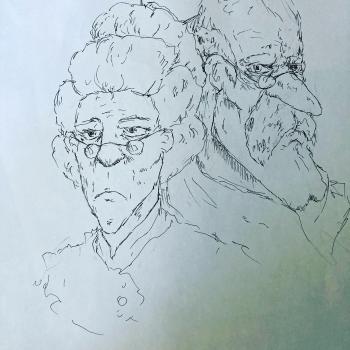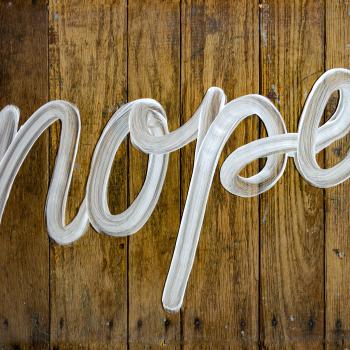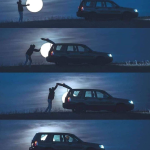Yesterday, in one of those homeschooling fits that arise from gazing at one’s dubiously educated offspring, wondering if they know anything or care at all, and then flailing, I made my children watch the Banksy video of the shredding of Girl With Balloon. They watched without interest or emotion. I paused several times to explain, trying to rouse their moral and aesthetic sense, and then played the thing again from the beginning.
“It’s not that great of a drawing,” said one when it was over, “I could probably do it.”
“Maybe you could,” I said, “but could you shred it remotely after it sells for 1.4 million?”
“Will the buyer get his money back?” asked another one.
“I don’t think he wants to,” I said. “Some experts are saying that the piece is now worth twice as much as before.”
And there you have it, proof that I do talk to my children about stuff, which is the real purpose of this morning’s post.
So anyway, later I read this—which is an interesting if confused account of how the art world absorbs the dissenter into itself and makes everything, even garbage, eventually mainstream. This is not the first time an artist has destroyed a piece of art in order to make the point that money controls the very nature of art itself. Nor the first time that millions have been paid in breathless delight for the thing destroyed or the act of destroying. The art world flutters and congratulates the artist for being brave. Sometimes the artist retreats for a while into a baffled silence. But everybody likes to eat.
I mean, if someone handed me 1.4 million dollars, or pounds, for something I’d sketched and then shredded, I might be depressed for a minute, but then I would go out and buy that big wheel of cheese on display in Wegman’s and eat the whole thing myself, alone in the quiet of my cupboard, not yet accustomed to the extraordinary idea that being rich, I could probably afford a second wheel to share.
What I like, though, is the bemusement of my children when confronted with ugly “art.” I like to drag them through galleries and stand them before large canvases—those ones painted in a single color, or multimedia disasters in bright orange, yellow, red, and pink.
“Whatcha think?” I ask, reading aloud descriptions with reverent good humor.
“Can’t we go back to the Roman statues?” is the inevitable response, or the armor, or the beautiful portraits—depends which museum, really.
“What,” I press, “don’t you like it?”
“It’s horrible,” announces the unenlightened, the child, as it were, confronted with a fat potentate with no clothes on.
That’s the problem with someone like Banksy, I think, though I only heard of him two days ago—and so much art for the last century. The point of it is the point it is making. It can’t be that you make something beautiful for its own sake. That’s too facile, too dumb, too yesterday. You have to say something clever, prophetic, and shocking with your very important work. The trouble is though, everyone is busy being clever, shocking, and prophetic on twitter and Instagram. Every one of us with a vague idea of English and enough money to buy a phone can stick it to the man, can amaze the whole room, can say something that nobody ever thought of before, can make sure everyone knows the important thoughts that I and thou had just now.
Which means that making something beautiful, or saying something sensible, or being kind, would make me—if I were to do any of those things—a true revolutionary.
Or imagine being the person who paints something really beautiful and then sells it to someone for a lot of money. How crazy would that be? So Crazy.
It won’t happen though, because we’ve forgotten about beauty, or worse, turned it over on itself. We’ve swapped out the meanings of things for their opposites. Truth, now, isn’t what is true, it is what I think is true. Love isn’t doing the right, kind, just, or merciful thing for the sake of another, without thought for the cost to oneself, it is a feeling of being happy in the presence of another person, or bunny, or meme. Beauty isn’t the thing that elevates, that draws the human person up towards the Transcendent Glory that is God himself, it is the paltry, common muck of self-expression. Courage isn’t facing death so that another might live, it is anonymously shredding a piece of paper after someone, who knows who, agreed to pay 1.4 million for it.
I prefer the divine reversals enacted by God. That one where he lays aside his glory and his crown, his beauty and his majesty, and comes down into the ugliness of our confusion to drag us out of the vile and disgusting pit that we so persistently and perversely dig for ourselves. He drags us out by going into the terrible darkness that enslaves and destroys us—not to make a point, but to rescue the human person from a terrible and eternal ugliness. And then, in a blaze of glistering light, he reclaims the beauty of a restored and perfect flesh, bringing us along into his very self. Not shredded, but exquisite and whole. It’s still hard to see the beauty of this. Our categories are still so ruined. Our colors do not reflect the light as they should. Our thoughts and feelings don’t rise up to grasp onto the depth and majesty of that strange work. We cast our money in every direction except the one that buys what is most beautiful, most lasting and true. But for the one who comes to his senses and finds himself standing, amazed, peering at that strange, beautiful, divine tableau, the more everything else he sees comes into focus and is adored for what it really is.
















